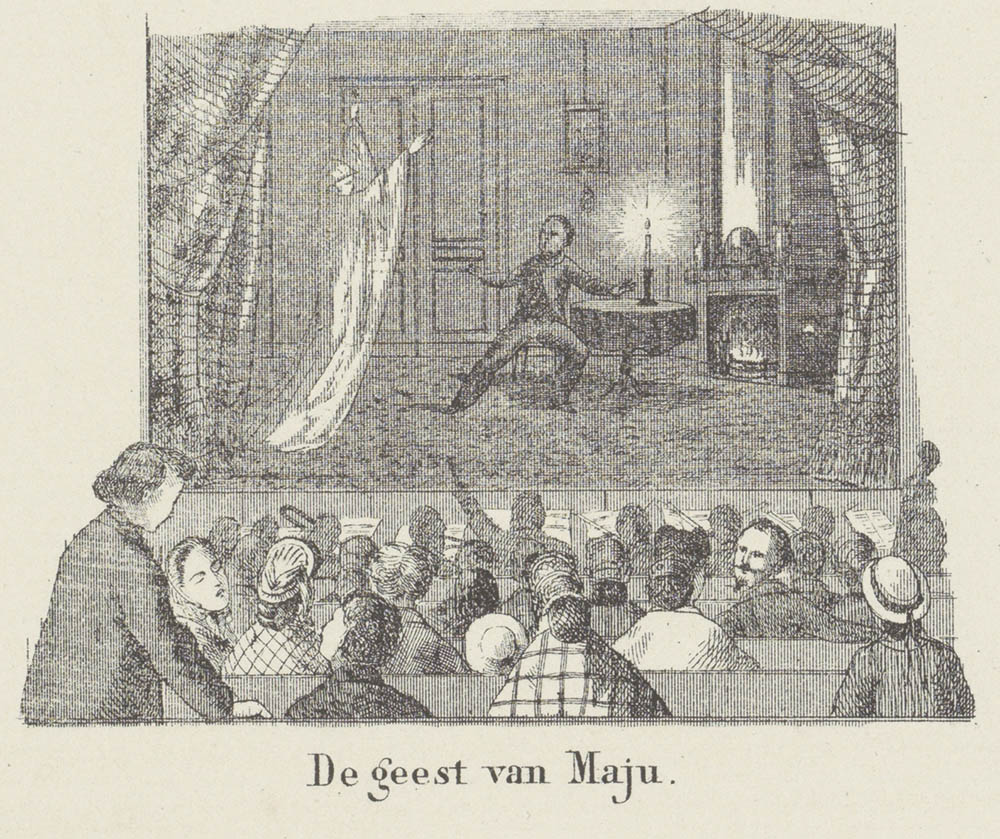Publications
Article: De Geest van Maju: The ghost lecture in the Netherlands by Dulce da Rocha Gonçalves

The ghost-themed optical exhibition was very popular in the nineteenth century: from Robertson’s Phantasmagoria in post-Revolutionary Paris to Pepper’s Ghost at the London Polytechnic in the 1860s, audiences rushed to witness the ghostly demonstrations, also known as ghost lectures. Recently, scholars such as Bernard Lightman and Iwan Rhys Morus have argued for a re-evaluation of historical practices such as these, which used to be considered mere spectacular entertainment: what was the role of these media experiences in making their audience relate to the new industrial and technological world around them? This article will focus on the arrival of the most famous of all ghost lectures, Pepper’s Ghost, which was brought to the Netherlands by Levie Kinsbergen Maju (1823-1886): I will trace the performances of the re-labelled De Geest van Maju (The Ghost of Maju) on Dutch fairgrounds and in permanent indoor theaters. The information I have gathered derives mainly from primary sources such as historical newspaper advertisements and reports. Additionally, I will approach the historical information through the concept of dispositif, following the proposal of media historian Frank Kessler: what aspects are at work in the dispositif of the ghost lecture? And how is this approach productive in terms of understanding Pepper’s Ghost and De Geest van Maju as historically situated media practices?
—
Da Rocha Gonçalves, D.M. (2020). De Geest van Maju: The ghost lecture in the Netherlands. Journal of Communication and Languages, 53 (Photography, Cinema and the Ghostly): 109-131.

